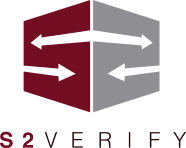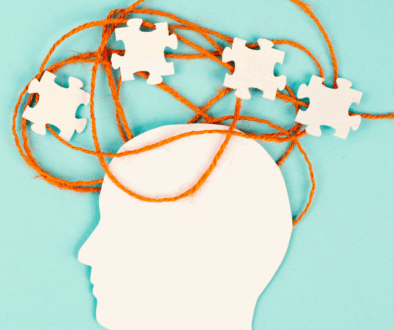How to Avoid Getting Sued for Using AI In HR
For decades, the human resources department functioned largely as an administrative arm within the company—tasked with handling the paperwork and minimizing risk around employee activity.
However, as companies navigate new operational norms in the wake of the pandemic and continue to transform in the digital age, the need for HR’s expertise and leadership in driving overall business strategy has never been greater. Now that employee metrics such as engagement, turnover, and retention are closely tied to key business metrics, HR has solidified its position as a strategic function within the company and established its seat at the table.
But, despite its heightened status, HR is still expected to manage the logistical and administrative side of the employee lifecycle on top of its expanded people-focused responsibilities. Today, HR professionals are expected to perform double duty with the same amount of resources and a tightening HR budget. That’s why so many HR professionals are turning to AI—to automate time-consuming HR tasks that get in the way of doing more strategic work.
Applications for AI In HR
Artificial Intelligence refers to the development of computer systems that can perform tasks typically requiring human intelligence. This includes capabilities such as learning, reasoning, problem-solving, and understanding natural language. AI is increasingly used in human resources to help drive hiring, retention, and employee development decisions.
Today, HR leaders are using AI across a wide range of tasks, including employee records management, payroll, recruitment, onboarding, and performance management.
In the future, AI may even be able to hire and fire employees and complete more complex tasks like answering HR-related employee queries and communicating salary details. Below are the top applications for AI in HR:
Recruiting and Talent Acquisition
AI can assist HR professionals in sourcing candidates, screening resumes, and identifying the most suitable candidates for a particular role. AI algorithms can analyze job descriptions and match them with the skills and experience of potential candidates, making the hiring process more efficient and reducing bias.
Candidate Assessment and Selection
AI can be used to conduct video interviews, personality assessments, and online tests to evaluate candidates’ suitability for a job. These tools can provide insights into a candidate’s soft skills, cognitive abilities, and cultural fit.
Onboarding
AI can facilitate onboarding by automating paperwork, providing new hires with relevant information, and answering their questions through chatbots.
Employee Training and Development
AI can create personalized learning paths for employees based on their skills and learning styles. Additionally, AI-powered chatbots or virtual mentors can provide continuous learning support and answer employee questions on various topics.
Performance Management
AI can help employers assess employee performance through data analysis and provide valuable insights for managers to make informed decisions about performance evaluations and career development opportunities.
Employee Engagement and Feedback
AI-driven employee surveys and sentiment analysis can gauge employee satisfaction and identify areas for improvement. AI can also collect feedback from various sources to comprehensively view employee sentiments.
Workforce Planning
AI can analyze large datasets to identify patterns and trends, enabling HR professionals to make data-driven decisions related to workforce planning, talent retention, and succession planning.
HR Compliance
AI can track changes to compliance laws and assist in ensuring compliance with labor laws, regulations, and company policies, reducing the risk of legal and ethical violations.
Legal Risks of Using AI In HR
But, while artificial intelligence creates massive opportunities for human resources departments in terms of efficiency and capacity, it also opens employers up to new forms of risk which must be addressed.
Privacy
First, AI in HR often involves processing sensitive employee data, such as personal information, health data, and performance evaluations. Mishandling or unauthorized access to this data can lead to breaches and privacy violations, potentially resulting in legal penalties.
Additionally, organizations must obtain explicit consent from employees before collecting and using their personal data for AI-based HR processes. Failing to secure proper consent can also lead to violations of data protection laws and regulations.
Discrimination
AI algorithms learn from historical data, and if the training data contains biases, the system will perpetuate those biases during decision-making. The humans creating and coding the AI for HR may input their own conscious or unconscious biases into the algorithm, or they may not think to safeguard against certain biases the AI develops.
This can result in discriminatory practices in areas like recruitment, talent selection, and performance evaluations, leading to potential legal liabilities related to discrimination.
How to Avoid Legal Action While Using AI In HR
In order to adhere to privacy laws, prevent discrimination in HR practices, and avoid costly legal action, HR professionals should take the following steps when using AI.
Vet AI Vendors Thoroughly
Companies typically cannot rely on a “the AI tool did it” defense when something goes wrong. Instead, they’ll be held liable for any negative activity around discrimination or privacy caused by the tool. As a result, employers should thoroughly vet any AI vendors to ensure they comply with ethical AI principles and data privacy standards. If a vendor refuses to disclose this information, HR should continue shopping for other tools. Choose AI systems that provide transparency in their decision-making processes. Employees should clearly understand how AI is being used in HR and how it impacts their employment.
Test Tools and Regularly Audit for Bias
Before onboarding a new AI tool with real company data, run some tests with fake data to see whether the algorithm presents bias or overreaches when it comes to data privacy. After launching the tool, regularly assess AI algorithms for biases and discriminatory patterns and take the necessary steps to address and minimize biases in AI decision-making processes to ensure fair treatment of all employees.
Start with Pilot Projects
Begin with small-scale pilot projects to test AI applications before full-scale implementation. This approach allows HR professionals to identify and address issues in a controlled environment.
Get Employee Consent
Before collecting and using their data in AI applications, obtain explicit consent from employees to ensure strict compliance with relevant data protection and privacy laws.
Review and Validate Outputs
Include human oversight in AI-based HR decisions and processes. Have HR professionals review and validate AI outputs, especially in critical areas like hiring and termination.
Collaborate with Legal
HR leaders should collaborate with general counsel or legal consultants specializing in AI and HR regulations to design programs adhering to relevant laws and regulations.
Define Guardrails and Educate Users
HR leaders should define and document the explicit limits of how AI can be used in the workplace and should create training for HR personnel around those specific guardrails to ensure responsible usage. This training should be continuous to keep up with evolving laws and regulations around AI and HR.
For more practical tips on navigating compliance when using AI in HR, check out this week’s episode of America Back to Work: Expert Interview Series. We sat down with John Rood, founder and CEO of Proceptual, a compliance solutions platform for emerging regulation of artificial intelligence and machine learning, to get his take on best practices for using AI in HR.







